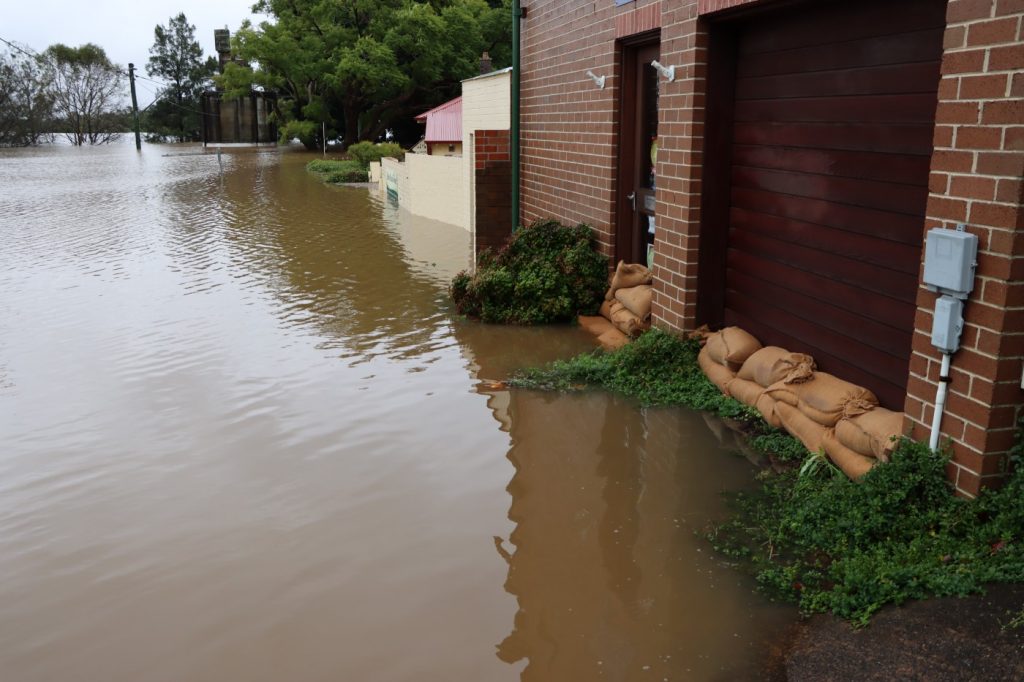Roughly a week after clean-up efforts began from a record-smashing deluge across the North Island, a second storm in the form of Cyclone Gabrielle is raising questions around community resilience, water infrastructure, and our wider environment

Cascading natural hazard events fuelled by climate change are the new norm for Auckland, Massey University Professor Christine Kenney says.
“Families and communities should be anticipating that cyclones, floods and other catastrophes will be occurring more frequently and planning ways to stay safe.
“Equally, local authorities should be stepping up to ensure that residents have access to essential resources and services.
“Timely accurate and regular communication with all sectors of the community regarding what and where emergency support is available and how to access it will be key.
“Outreach by local community agencies and NGOs has been very evident in response to the recent floods, yet there has been a relative silence in the media and elsewhere regarding the community assistance offered by various groups.
“As exemplars, Te Whānau o Waipareira Trust continues to provide effective outreach in West Auckland, Māori wardens have mobilised to assess needs, Te Puia Marae is still housing evacuees, and Pacifica initiatives in South Auckland have provided wide spread support in the form of meals and accommodation.
“Ensuring effective recovery from future disasters will require genuine collaboration and regular communication with these diverse sectors of wider Auckland to ensure disaster responses are well-coordinated, resources are allocated appropriately, and all parts of the Auckland community receive essential support.”
NIWA Auckland’s Dr Annette Semadeni-Davies says the floods have shone a light on nature-based alternatives to traditional pipe-based drainage networks.
“In Auckland’s central city, land use intensification has increased surface runoff. In addition, the Auckland stormwater system is aging in places and was not designed for climate change-driven extremely high intensity rainfalls.
“The combination of extreme rainfall and limited capacity to cope with high runoff volumes in the system led to widespread flooding.
“After the storm, there have been several recommendations for improving flood management in Auckland, including nature-based solutions. Those suggested include rain gardens, vegetated swales, living roofs and walls, infiltration strips, tree-pits, constructed ponds and wetlands.
“Such solutions are cost-effective for day-to-day stormwater management; their main functions are to remove contaminants from stormwater and to reduce peak flows from non-extreme high intensity rainfalls.
“They can also provide a range of social, cultural and ecological co-benefits to urban areas, including habitat creation, passive cooling of the urban heat island, provision of walking and cycle ways, and landscaping.
“While important for protecting our urban water environments, they will not be adequate for the level of flooding we have recently seen on their own.
“It is vital to distinguish the nature-based solutions used for stormwater management from those used for flood protection, lest the public lose faith in these valuable assets if they fail to hold back flood waters.
“Nature-based solutions for flood protection, such as flood-basins, are larger than those for stormwater management. They are designed for rainfalls with a return period of decades compared to return periods of two to five years for stormwater management.
“The distinction between nature-based solutions for flood protection and stormwater management is important as the design for an effective ‘sponge’ to soak up flood waters may not be cost-effective for stormwater management and those intended for stormwater management may not have sufficient water storage for flood protection.
“Moreover, to maximize ‘sponginess’, solutions for flood management need to be ‘squeezed’ before the next rainfall, just like squeezing out water from a dish cloth before it can be used again.
“The short time between ex-tropical storm Hale and the deluge on January 27 meant that nature-based solutions based on infiltration would likely already wet because they take time to empty.
“In contrast, nature- based solutions for stormwater management need extended storage of a day or more for water treatment, and even longer for rainwater harvesting.
“This means that a balance is required between operating nature-based solutions for water quantity control (keeping them empty between storms), water quality control (maximizing detention times for water treatment by slowly releasing water) and water reuse (retaining water for use in dry weather).
“There is also the issue of where nature-based solutions should be located. Those currently used for stormwater management in Auckland are mostly in new developments where they were part of the urban design.
“Larger nature-based solutions for flood protection, such as flood basins, will require land that may not be available and will be difficult to retrofit in the highly developed isthmus area.
“There are several options that could be explored for flood management in Auckland.
“One option is real time control of flow through pipes during high flow events (for example, by draining stormwater storage infrastructure before the onset of forecasted heavy rainfall, avoiding bottlenecks and surges, and diverting water away from critical infrastructure or densely populated areas).
“Other options include construction of underground cisterns, using existing low-risk amenities such as playing fields, parks and carparks as flood basins (there are already several examples of this in Auckland), managed retreat from vulnerable areas and continued maintenance of and upgrades to existing drainage infrastructure.”
University of Waikato professor Conrad Pilditch says Sustainable Seas research reveals an unseen cost of these events to our estuarine and coastal ecosystems.
“With much more flooding set to come in the future, these climate-related events will push estuary ecosystems to the brink of collapse and some may never recover.
“The more an estuary is flooded, the more turbid it becomes, eroding ecosystem health and increasing its vulnerability to a tipping point. A tipping point is a rapid transformation that happens when an ecosystem has lost its capacity to cope with change and restore itself to balance.
“It’s vital we enact placed-based strategies and ecosystem-based management (EBM) to limit the amount of sediment and nutrients in Aotearoa’s estuaries and give them the best chance of surviving the impacts of climate-related events.”
Massey University Associate Professor Siautu Alefaio says from a pandemic to extreme weather events, compounding disasters took their toll on communities as they tried to stay resilient.
“The state of a nation prior to a disaster will determine how they recover. If as a community or nation we work together, are helpful and responsive to those displaced, poor and vulnerable.
“Have emergency management systems that align and work in unity with local community services.
“Courageous leadership that is not influenced by racism, elitist arrogance or fear of other races/cultures and how they do life.
“Basically, we are an equitable society. Then, our resilience to the severity of climates of change can withstand this new tide of compounding disasters, whether it’s you today or me tomorrow.
“The team of five million will need to empathise and mobilise in order to support each other.”








